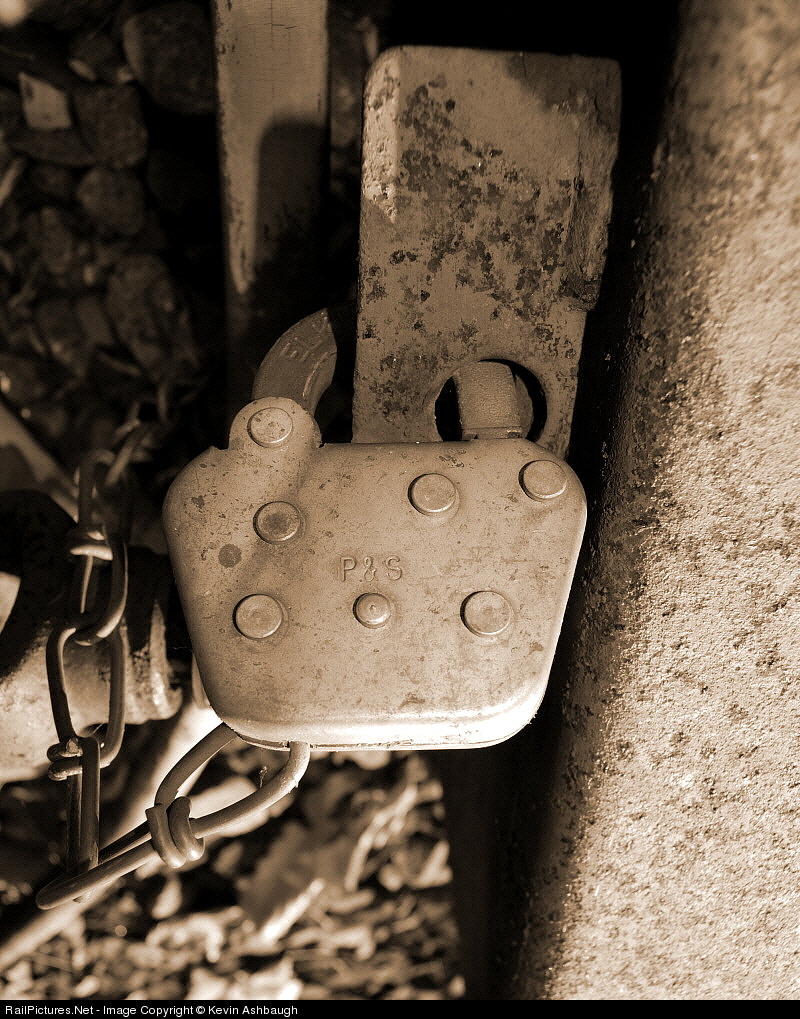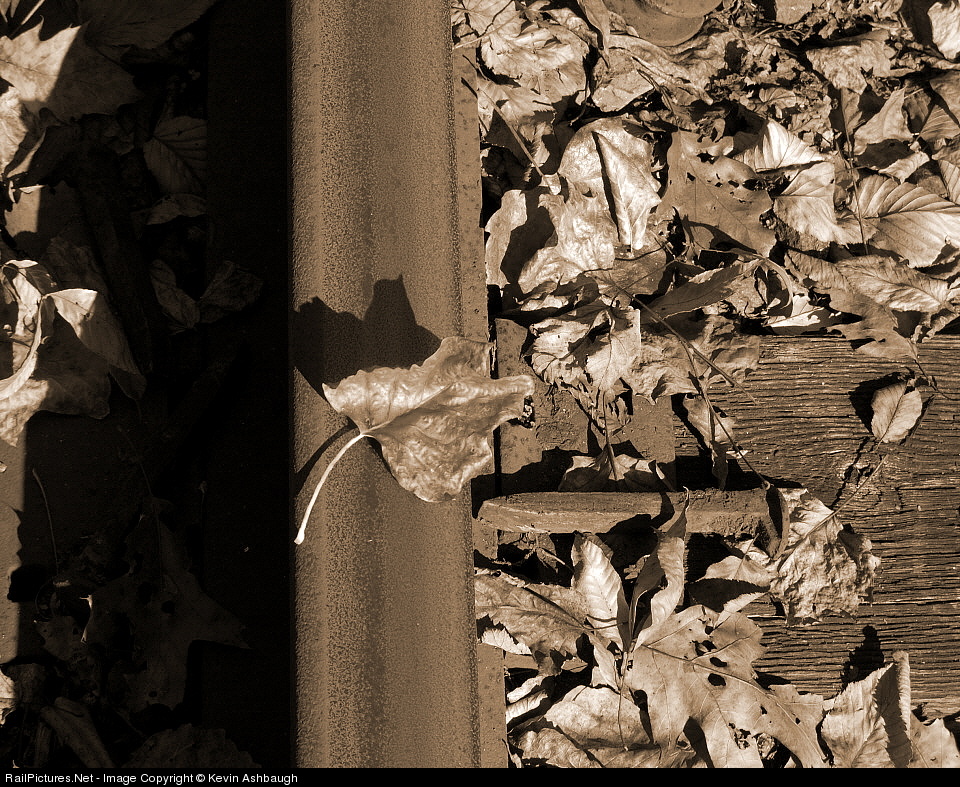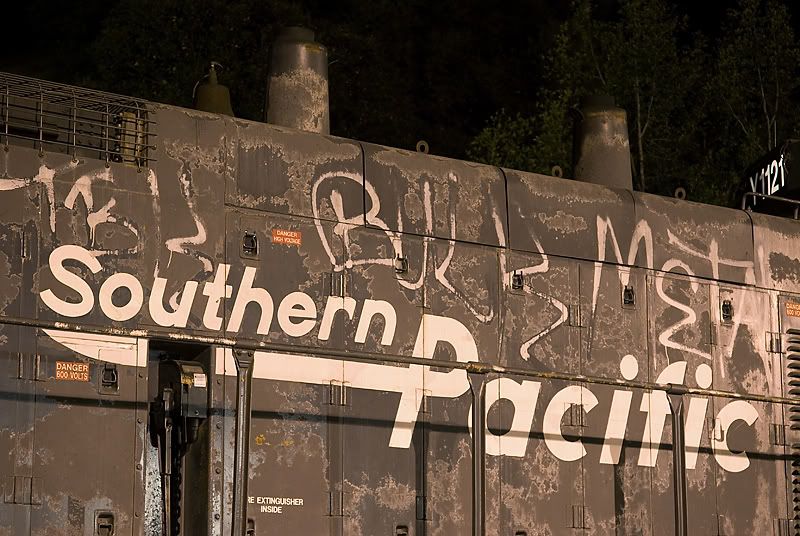First of all, I'm not a big fan of many pans. A roster shot with a blurred background, that's all. A technical trick, but one that doesn't add too much compositionally. Why not?
Well, let's start with why we do pans - because they convey a sense of motion. Some of that motion is implied by the train itself, of course, presumed to be moving forward; the blur makes the movement more overt. Thus, it helps if the blurred background contributes to that. A blur of trees is neutral, to my eye, a jumble of shades, with the result not that much different than a roster shot; the focus is the engine and there is nothing else to look at. A blurred building, on the other hand, conveys a sense of a second object that the first object, the train, is moving past.
Steam is particularly good as a subject for pans, because the plume clearly indicates direction. In addition, the plume adds a secondary compositional element; a diesel pan can end up being a simple box in the middle of a blur background; boring. Also, that element is a pleasing diagonal up above the engine which makes for a nice contrast with the generally horizontal lines of the engine. Of course, one also captures driver rod blur for yet more dynamism, and often the shape is more interesting than a rectangle, with a smokestack on top and interesting exposed running gear.
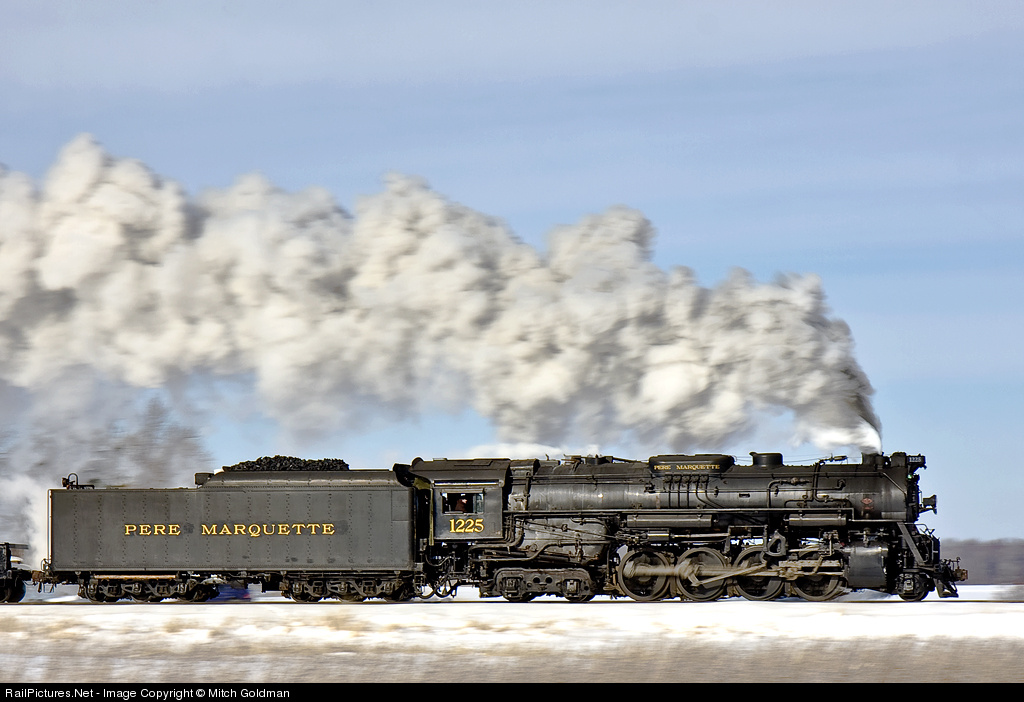 Here is the link to 25 of Mitch's pans on RP. I'll talk about a few here. First up, geesh, what a shot (captioned version here)! Steam, of course. The plume has a nice blend of whites and grays, set against a blue sky. The snow means that the engine is surrounded by a light background (yet multicolored and thus more interesting: sky blue, snow white, weedy beige), making it stand out; the light sheen on the engine adds to that greatly, as does the excellent light overall. Extensive detail in the sharp detail (despite the 1/25 shutter speed!) makes it all the more compelling.
Here is the link to 25 of Mitch's pans on RP. I'll talk about a few here. First up, geesh, what a shot (captioned version here)! Steam, of course. The plume has a nice blend of whites and grays, set against a blue sky. The snow means that the engine is surrounded by a light background (yet multicolored and thus more interesting: sky blue, snow white, weedy beige), making it stand out; the light sheen on the engine adds to that greatly, as does the excellent light overall. Extensive detail in the sharp detail (despite the 1/25 shutter speed!) makes it all the more compelling. To illustrate the comparison, I will be a bit unfair and show one of Mitch's poorer pans. If I had one of my own to use, I would! Consider this picture (captioned version here). Put aside the somewhat "high sun" lighting for now. The background is a weakly-defined green blur. The plume goes straight up and out of the frame, eliminating the second compositional element. The wedge angle creates lines that are off horizontal, some slope, but not enough to make them stand out (or maybe I'm just jaded by having seen, and shot!, zillions of wedgies over the years). The wedge angle means the entire engine can't be in focus because of differences in movement relative to the film plane.
To illustrate the comparison, I will be a bit unfair and show one of Mitch's poorer pans. If I had one of my own to use, I would! Consider this picture (captioned version here). Put aside the somewhat "high sun" lighting for now. The background is a weakly-defined green blur. The plume goes straight up and out of the frame, eliminating the second compositional element. The wedge angle creates lines that are off horizontal, some slope, but not enough to make them stand out (or maybe I'm just jaded by having seen, and shot!, zillions of wedgies over the years). The wedge angle means the entire engine can't be in focus because of differences in movement relative to the film plane.In Mitch's defense, he did shoot this back in 1999! He's come a long way.
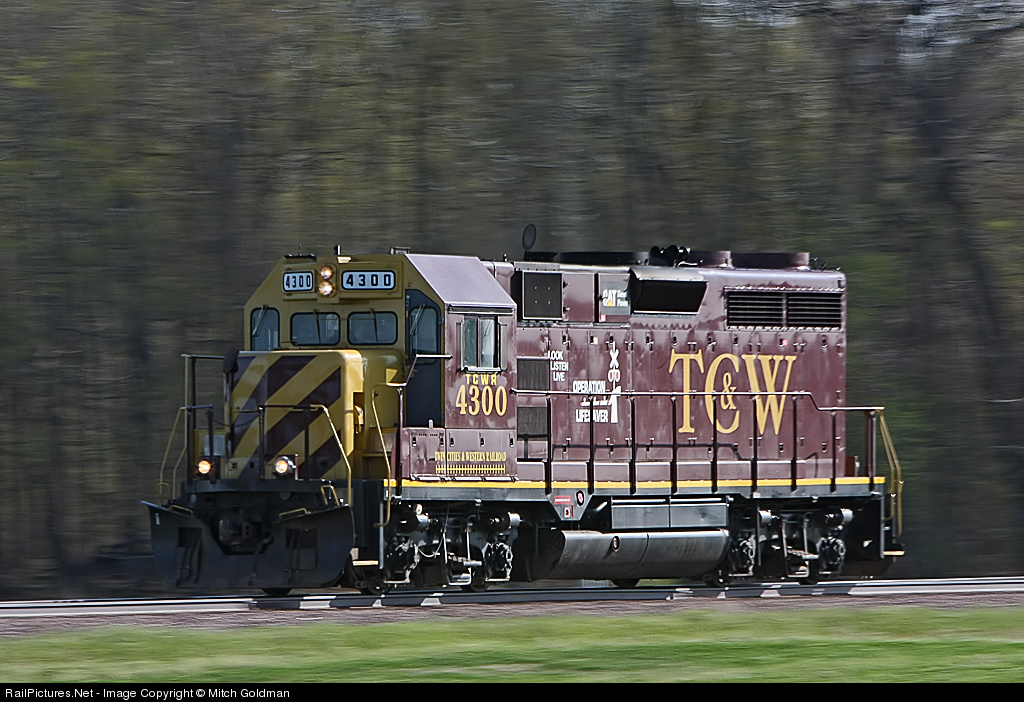 As for compositional differences inherent to steam vs. diesel, take a look at Mitch's recent TC&W shot (captioned version here). It's a rectangle on a blurred background, a very simple composition. Don't get me wrong, there are lots of what I will call "plus factors" here: the semi-glint, the contrast between the side in light and the nose in shadow (a plus here as it breaks up the rectangle in terms of tonality). I really like the verticals of the dark tree trunks, which adds a pattern to the background. Compare the strength of the background's presence here with the previous shot, just blurred leaves. And, I just like the purple hue of the engine. It's a very nice diesel pan. But I think a well done steam shot is heads and shoulders over this one (for photographic reasons, and not because of any steam bias!).
As for compositional differences inherent to steam vs. diesel, take a look at Mitch's recent TC&W shot (captioned version here). It's a rectangle on a blurred background, a very simple composition. Don't get me wrong, there are lots of what I will call "plus factors" here: the semi-glint, the contrast between the side in light and the nose in shadow (a plus here as it breaks up the rectangle in terms of tonality). I really like the verticals of the dark tree trunks, which adds a pattern to the background. Compare the strength of the background's presence here with the previous shot, just blurred leaves. And, I just like the purple hue of the engine. It's a very nice diesel pan. But I think a well done steam shot is heads and shoulders over this one (for photographic reasons, and not because of any steam bias!).Looks like there is much to be said about this topic. I'll revisit Mitch's pans another time, and find some others as well. Suggestions about other shots, particularly those with interesting backgrounds, welcome. Part II, down the road someday. :)



